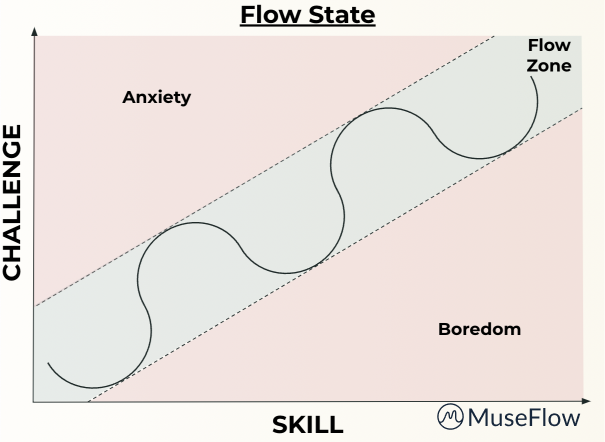What is the Best Simply Piano Alternative? Discover Why MuseFlow is Superior
If you're looking for the best piano learning app, you're in the right place. You've probably come across some apps such as Simply Piano and others. While every technology has some benefits, there is a new player in town that you have to check out. MuseFlow stands out as the best Simply Piano alternative, offering unique features and benefits that make it the superior choice for aspiring pianists. In this blog post, we'll explore why the California based tech company is the best Simply Piano competitor and how it will enhance your piano learning journey...
Start using MuseFlow for free now!

1. Personalized Learning Experience
One of the most significant advantages MuseFlow has is its personalized learning experience. The software uses advanced AI technology to tailor each lesson to your specific skill level and also to your specific learning pace. This means that the app always adapts. It adapts to your progress, making sure that you're always challenged but never overwhelmed. This keeps you learning fast while having fun.
Why it matters? Personalized learning methods keep you engaged & motivated. This makes the learning process more efficient but also a lot more enjoyable than ever before. Instead of just following a rigid (and often boring) curriculum, with MuseFlow you learn at your own pace, while focusing on areas that need improvement.. reinforcing your strengths.

2. Real-Time Feedback
The piano teaching app provides real-time feedback on your playing. This is something that many Simply Piano competitors lack. As you practice, the app listens to your performance and offers instant corrections. Those corrections and improvements are on the unique notes, timing, and techniques. This immediate feedback is obviously very important for developing the correct playing habits. This will help you really make sure that mistakes are corrected on the spot. This instant feedback loop will help you get better at a faster rate than ever before.
Why it matters? Real-time feedback helps you progress faster and with greater accuracy. It’s really like having a personal tutor, that is available 24/7! One that guides you through each practice session. This feature is especially beneficial for beginners who need constant guidance to develop their skills correctly.

3. Gamified Learning for Enhanced Motivation
While Simply Piano has some old-school gamification elements, MuseFlow takes it to the next level! The app incorporates fun progress bars, achievement badges, and interactive challenges that make learning piano feel like playing a game. This new gamified approach keeps you motivated and makes practice sessions more enjoyable. You have probably seen it on other apps that keep you engaged, but instead of scrolling an app for no real reason, it's of course better to use it for learning a new skill.
Why it matters? Staying motivated is one of the biggest challenges when learning an instrument. If you've tried learning any instrument, you will completely understand. By making the learning process fun & rewarding, MuseFlow helps you want to stay committed to your practice routine. This helps you achieve your musical goals a lot faster than what was possible before. With our free trial for 7 days, it's like having simply piano free. You will only pay if you like and use the app, you won't get locked in!

4. Comprehensive and Unique Curriculum
MuseFlow offers a thorough educational framework. One that covers all aspects of piano learning, from basic techniques to advanced music theory. The app’s extensive course structure give you well-rounded skill set... making you a more versatile and confident pianist.
Why it matters? You will now have a solid foundation for your musical journey. Whether you’re a complete beginner or looking to refine your skills, MuseFlow’s complete course structure makes sure that you have access to all the resources you need to succeed. You will never get bored!

5. Expertly Designed by Musicians and Educators
The piano lessons app was developed by professional musicians and educators. Those who understand the challenges of learning piano. Some of the founders started as self-taught pianists themselves, which gives them a unique perspective on the needs of learners. Their expertise is strongly reflected in the app’s user-friendly design and thoughtful features. We can assure you that you'll really enjoy taking your Midi piano lessons, more than any other lessons, we promise you that!
Why it matters? Learning from an app designed by experts means you’re getting high-quality instruction that addresses the most important challenges & frustrations. This unique design, with you as the user in mind as the #1 priority, ensures that you’re learning effectively and efficiently -- helping you progress faster.

Conclusion: Why MuseFlow is the Best Simply Piano Alternative
When it comes to finding the best Simply Piano alternative, MuseFlow is your best choice! That's for many reasons, such as its personalized learning experience, real-time feedback, gamified approach, comprehensive curriculum, and expert design. These features make MuseFlow the better choice for anyone serious about learning piano. The app has a free trial, so you can try it before having to pay anything.
While Simply Piano is an option, MuseFlow offers a more tailored and engaging learning experience that can help you achieve your musical goals faster, while bringing more joy into your life.


.svg)

.jpg)










